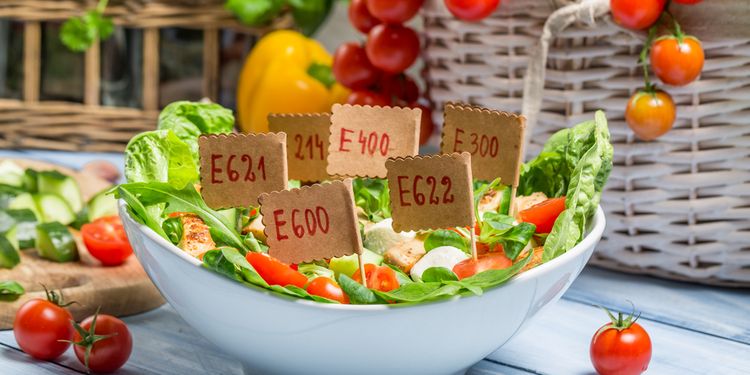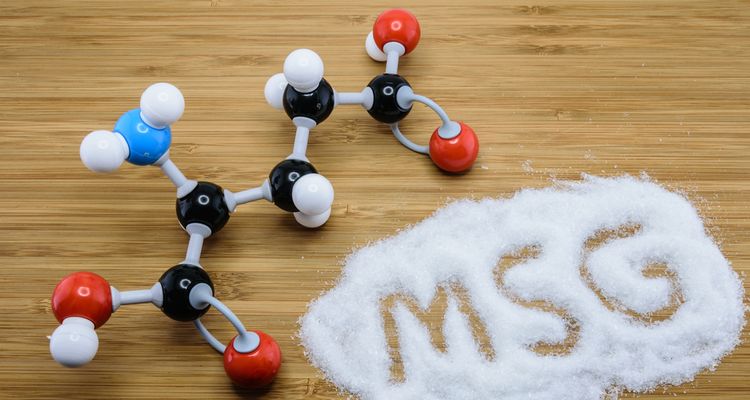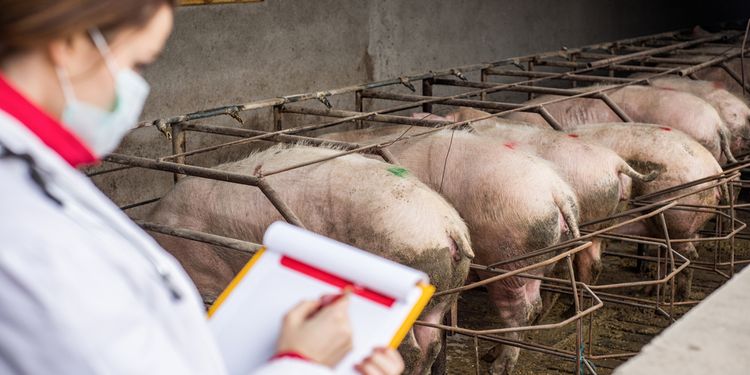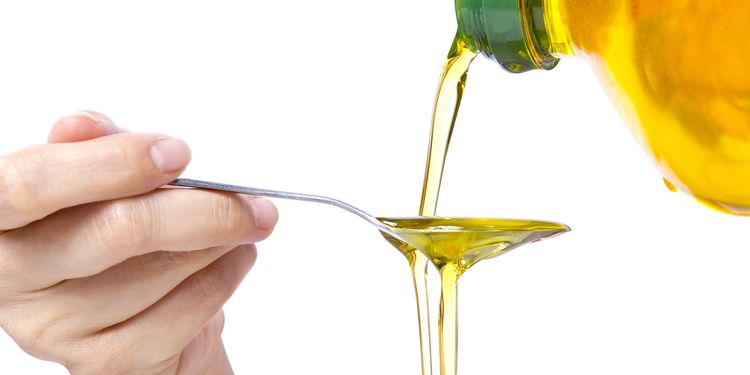9 Toxic Food Ingredients To Avoid
Your diet is one of the most important lines of defense that you have against poor health. If what you’re putting into your body isn’t ideal, it’s unlikely that any medical interventions will truly heal the symptoms that you complain of.
Most people who are on the path to wellness have begun to understand this. The problem they then find is in navigating the maze of modern food choices that are at our fingertips.
Studies seem to demonize foods one minute and then label them “superfoods” the next. One second something is a healthy solution, but maybe it causes cancer down the line. Contrary diet fads seem to pop up one after another. For those who are trying to evolve their diets, deciphering what’s actually healthy can seem like a nightmare. Luckily, it doesn’t have to be as hard as you may think. Understanding and avoiding toxins in food can be one of the best ways to navigate a healthy diet.
People who are looking to be health-conscious can easily be fooled by clever marketing and packaging. When it comes to any food that has a barcode, be wary. Learn how to read labels, and if there’s an ingredient you don’t recognize, you may want to reconsider.
No matter what it says on the package, a processed food is a processed food. Just because it’s gluten-free, paleo, vegan, trans fat-free or non-GMO doesn’t mean it’s good for you!
When you shop, try to stick to the outer edges of the market and stay away from the middle. When purchasing or eating something, ask yourself: is this a real food? Consider how close it is to its whole form.
As you read an ingredients list, imagine the individual ingredients being set out on your kitchen counter. Do you recognize them, or do you have to imagine them as a mysterious liquid or powder?
Onto the list…

1. Preservatives
Food preservation is a tactic that we’ve been practicing for many thousands of years. It’s not until recently though that the demands of our modern food system have led us down a chemical-laden path.
These ubiquitous additives enable food producers to keep their products on the shelves far beyond natural limits and keep profits up. While they may keep foods appearing fresh and prevent food-borne illness, they could also be causing you harm. Various common preservatives have been linked to allergies, cancer, hyperactivity, learning disabilities, and decreased fertility in men.1,2,3
If you’re looking to prioritize your health, these are some of the ingredients you want to watch out for. Not only will you cut out possible health hazards, you’ll also begin to naturally seek out healthy, real food alternatives.
Common types: Nitrates/nitrites, sodium benzoate, potassium sorbate, sulfites, BHA (butylated hydroxyanisole), and BHT (butylated hydroxytoluene).
Commonly found in: Flavored drinks, wine, lunch meat, dairy products, salad dressings, breads, pickles, packaged foods; often hidden in prepared foods/meals and salad bars.
Cut down on the kinds of foods that commonly contain preservatives. Not only will it save your health, but your wallet as well. Certain foods aren’t meant to be kept for long periods (dairy, lunch meat). Experiment with ways to go without or look for alternatives. Instead of flavored water or other drinks, try infusing water with fruit and herbs.
A lot of higher-quality (read: higher-priced) brands contain preservative-free versions of foods that normally contain preservatives. Read the labels carefully and consider splurging on items you can’t live without. Your wallet may help motivate you to eat more mindfully.
Bacteria are important. By killing the unwanted bacteria, preservatives are also killing the good guys that help populate our gut flora and aid in digestion. Certain foods like sauerkraut and pickles used to be beneficial probiotic health foods. Many popular commercial brands are now sterile. Due to mass production, implementing chemicals is the only way to ensure safety. Look for small family-owned companies or experiment with making your own as replacements. These fresher alternatives should contain beneficial live culture probiotics and be unpasteurized.
Look for sulfite-free wines and beers. Sulfites can cause an allergic response and are linked to headaches, rashes, hypotension, and asthma.24
Plan ahead. In order to avoid preservatives, you may have to do a little more work in the kitchen and make your meals at home. Try to batch your prep work into one or two sessions a week. Chop salad ingredients beforehand and keep them in separate containers to throw together quickly when needed.

2. Artificial Colors
This is an ingredient that’s easy to find the motivation to avoid, since the only purpose of artificial colors is to make products look more appealing to the eye.
In searching for foods that leave out artificial colors, you’ll most likely find higher-quality, better tasting products. Goods that tend to use artificial dye do so because they lack the real food ingredients they are trying to associate with.
Common types: Yellow #5/#6, red #40/#3/#2, green #3, blue #1/#2, caramel coloring.
Commonly found in: Juice, sports drinks, processed meat, dairy/yogurt, kids’ food products, sauces, soda, beer, candy, cereal.
Keep these foods away from kids! There are very strong links between artificial colors and hyperactivity and learning disabilities in kids, especially those already prone.5,6 Foods that contain the most amount of coloring tend to be kids’ products.
Vibrant reds and blues are added to catch the eye of the tot you have in tow. Read labels carefully and make sure there are absolutely no artificial colors in the ingredients list.
Foods that come with color also tend to have high amounts of other harmful chemicals, preservatives, and sugars. Colors are an easy ingredient to identify. Even if you’re unsure about the other ingredients on the label, if you see a color on the list, it’s an immediate indicator that it’s highly processed.
Almost all foods that contain artificial color are junk foods. However, not all junk foods have artificial color. Even when you do have that occasional craving for a soda or candy, find a more natural version. Again, colorants have no effect whatsoever on flavor. If you’re going to indulge, go ahead, just consider looking for options that aren’t electric blue.

3. Added Flavors
Notice how we didn’t differentiate between natural and artificial flavors? The only thing that “natural” infers is that it’s somehow derived from some type of animal or plant. Any number of questionable ingredients can be hiding under either of these categories.
Similar to artificial colors, foods most likely include added flavors because they lack flavor otherwise. Luckily, eating food with inherent flavor and improving your health don’t have to be mutually exclusive.
Common types: Natural flavors, artificial flavors.
Commonly found in: Packaged foods of any kind (yogurt, protein bars, drinks, snacks).
It’s easy to turn a blind eye to these additives. After all, they’re often listed as simply “natural” or “artificial” flavoring. Don’t be fooled. Labels don’t have to list specifics when it comes to additives used to flavor. They can contain anything listed as “safe” by the FDA – meaning potentially hundreds of substances!
How does beaver butt sound? Castoreum, considered a natural vanilla flavor, is actually derived from a scent gland secretion found near the tail end of a beaver.7
Sometimes you’re on the run and need to grab something quick. Look for packaged foods that contain real food ingredients like nuts or fruits. While these may not be perfect, they generally do the trick and leave out the mystery.

4. Sweeteners
The “which sweetener is healthiest?” debate may never end. Whether it’s artificial or natural, what’s important to remember is that a sweetener is almost always going to be a refined food. Whether it’s aspartame or agave nectar, chances are it will have its downsides.
Our affinity for sweet flavor has been manipulated by food scientists to the point where we can no longer draw the line between a natural and unnatural sugar craving. Redefining your relationship to all things “sweet” is a crucial part of reclaiming your health.
Common artificial types: Neotame, aspartame, cyclamate, sucralose, saccharin, high fructose corn syrup.
Common natural types: Agave nectar, stevia, sucrose, sugar alcohols (erythritol, xylitol), cane sugar/juice.
Toss the artificial sweeteners for good. Just because they’re “no calorie” does NOT mean they’re good for you. In fact, they may actually make you gain weight by disrupting hormones, in addition to being carcinogenic.17,18,19,20 It’s safer to cut down and use real-food sugars when needed.
Be wary of any plant-based sugar, such as evaporated cane juice or sugar beet juice, and eliminate high fructose corn syrup entirely. This highly-processed form of fructose sugar derived from corn wreaks havoc on your system. Overconsumption of HFCS is linked to diabetes, obesity, and heart disease , to name a few.21,22
Be careful with products (usually kids’ products) that claim to be sweetened with “real fruit juice.” While this may be true, fruit juice is essentially a concentrated form of fructose and has a similar effect as HFCS.
For those who suffer from blood sugar dysregulation, products like monk fruit, lo han guo, stevia, or xylitol might be your best option. Though they’re on the more processed side, they don’t affect blood sugar the way some others do and are much safer than synthetic sweeteners.

If you have a sweet tooth, work on eliminating all sweeteners for a period of time. While it might be extremely difficult at first, it can reduce your cravings and alter your taste preference long-term.
If you have a craving, opt for fresh fruit to tide you over. When it comes to adding sugar to foods, work on reducing the amount slowly over time. You might find that you’re covering up a lot of wonderful flavors.
Once you cut down, you often become sensitized and cutting down becomes appealing to your taste buds. When you absolutely can’t resist the urge for something sweet, stick to more naturally-derived products such as honey, organic cane sugar, real maple syrup, or molasses.
Just don’t go overboard or be fooled into believing they’re “healthy.” Even products like agave nectar that are advertised as low-glycemic (little to no effect on blood sugar) actually have very similar patterns to sucrose (table sugar).25

5. MSG
Monosodium glutamate, commonly referred to as MSG, is the salt from the naturally-occurring amino acid glutamic acid (or glutamate). While it can occur naturally in foods like seaweed and soy, it’s often a processed additive used to enhance flavors. As we illustrated with sweeteners, just because something is a derivative of a naturally-occurring substance doesn’t mean it’s safe.
In the case of MSG, the concern is that it provides a much more concentrated amount of glutamate than found naturally in foods. Glutamate acts as a neurotransmitter and, while it’s important for things like learning and brain development, more doesn’t mean better.
Once the glutamate receptors are filled to their limit, excess glutamate accumulates in the brain and results in toxicity and cell death. Glutamate toxicity may be implicated in neurological disorders in humans and is known to cause migraines in sensitive individuals.23,14 MSG in high doses has been shown to cause brain lesions in monkeys and mice.15,16
Common names: Monosodium glutamate, glutamate, hydrolyzed proteins.
Commonly found in: Packaged snack foods, chips, soy products, protein powders, soups, spice mixes, Asian restaurants, salad dressings, sauces.
When going out to eat, ask for meals with no MSG. Restaurants tend to add it in powdered form when cooking, and it can be easily omitted.
Make your own spice blends. MSG is commonly found in prepackaged seasonings, which can easily be made at home (and will save you money in the long run). Make a large batch and keep it in an old spice jar.
Some products contain naturally-occurring MSG, which shouldn’t be too much of a concern. Again, glutamate itself is an amino acid. There’s no need to religiously avoid it. Simply be aware and eliminate excess where you can.

6. GMOs
GMOs (genetically modified organisms) present a unique predicament in our modern world, as scientists are enabled to alter the DNA of crops. GMOs aren’t simply a chemical or toxin, as these GMO foods still seem like real foods.
However, it’s reasonable to consider DNA altering as a hefty form of processing with unknown consequences. We’re no longer isolating or creating substances in a lab—now we’re creating entirely different organisms.
There have been a few studies that demonstrate the adverse health effects of GMOs on animals, ranging from kidney problems to reproductive issues.11,12 Very few studies have been done on the true safety of GMOs, and none were done longer than three months.13
Our society is quick to deem safe anything that doesn’t seem to cause an immediate adverse effect. We’ve seen time and time again that this method can prove costly. DDT, thalidomide, and asbestos are just a few historical examples of this concept in action.
A big problem with GMOs is that we simply don’t have nearly enough information. So unless you feel like playing Russian roulette with you and your family’s health, it’s wise to stay away. Many countries outside the US have even banned GMO crops.
Common GMO foods: Soy, corn, zucchini, papaya, sugar beet, wheat.
Because there are no labeling laws yet, deciphering what is GMO and what isn’t can be tough. When it comes to common GMO foods, only buy organic.
In general, you can count on anything containing a soy or corn product to likely be a GMO. That means a vast majority of packaged foods.
Stick to whole foods. If your diet consists primarily of processed foods, avoiding GMOs is a pain. However, as you shift to real foods, you’ll find that it becomes fairly simple to stay away.

7. Factory-Farmed Meat
Cutting down on meat is probably one of the most commonly recommended health tips. The truth is, animal products can be an extremely important part of a nutritious diet. In fact, meat itself isn’t a detriment to most people’s health.
It’s the farming practice behind it that needs changing. In order to meet demand, farmers have taken up questionable practices. Corn feeding, antibiotic use, and unhealthy living conditions for animals could all be factors for why meat has gotten such a bad rap. The problem is that our modern system isn’t about producing healthy animals. And when you eat unhealthy animals, you inherit their ailments.
80% of the corn grown in the US goes to animal feed, and almost all of it is GMO.9 Most animals aren’t designed for a diet of corn and soy, which can have negative implications on their health and, in turn, on ours.

Antibiotics are necessary when keeping animals in close quarters and are also used to fatten them for greater profit. Traces of these antibiotics (which aren’t approved for humans) can be found in the meat long after it’s processed.10 If they fatten cows, there’s a good chance they fatten humans as well.
Opt for pastured meats, but be aware of false advertising. There are no strict regulations on what “pastured” really means, and even “grass-fed” can be deceiving. All cows, even factory-farmed, are fed grass at some point in their lives. Look for grass-finished or 100% grass-fed. The best way to find meat is to hit up your local farmer’s market. Meet your farmer and ask about his/her practices. Better yet, check out the operation in person.
If you have no local access to high-quality meats, US Wellness Meats offers quality that is second to none, grass-fed the whole way through. Spend now or pay later. Buying high-quality meat takes a bit more effort and cash. In the end, it comes down to your health. Challenge yourself to spend more on higher-quality meat and eat it less often. Doing this can even out your costs.

8. Gluten
Gluten is a protein found in many grains that can cause an inflammatory reaction, linking it to all sorts of disease. It has been highly processed and added to packaged foods in recent years to create a more palatable taste and texture.
The gluten-free craze has led to nothing short of chaos in the health food world. This is a perfect example of taking an ingredient out of context, demonizing it, and then using fear to turn it into the latest fad. From soap to pasta and fruit snacks, you can find gluten-free anything. When approaching the elimination of gluten from your diet, it’s important to keep in mind why and how it can be a problem.
Commonly found in: Wheat products, grain products, oatmeal, cereal, soy sauce, packaged snacks, meat.
Common alternative names: maltodextrin, thickener, binder, modified food starch.
Eliminating gluten can be extremely challenging, and it may not be the first task you want to tackle unless you’re aiming to treat something specific. If you feel you have gluten sensitivity, or are experiencing extreme autoimmune, digestive, or arthritic symptoms, eliminating gluten can be extremely beneficial.
If you don’t see any major links between your health and gluten, eliminate gluten from an added ingredient perspective first. There’s really no reason that wheat protein should be included in soy sauce, soups, or anything that isn’t a cereal good.
One theory on gluten sensitivity is that we don’t ferment grains the way we used to. Something about the fermentation process may make proteins, like gluten, easier for our system to handle. Sourdough or traditionally-made breads using sprouted wheat may be a better alternative for those not wishing to give up bread entirely.8
Don’t just opt for gluten-free versions of the same foods. One of the reasons gluten could be causing so many problems is that it’s so widely consumed in such highly processed forms. If we were a culture raised on bean flour instead of wheat, could we have ended up having negative reactions to bean protein instead? It’s definitely possible. Just because a food is gluten-free doesn’t make it any less processed or healthy.

9. Processed Fats
For the last few decades, fat has been one of the biggest trigger words in the diet world. Thankfully, fat-phobia is coming to an end. However, as we move through this dietary fat revolution, we must tread carefully.
When it comes to understanding good fats vs. bad fats, it’s time to put your critical thinking caps on. Just as with any other food, think about how many steps the item has gone through to get from its original plant/animal. What technology did it require? How many ingredients were involved? There’s no need to avoid fats that occur naturally in high-quality whole foods, but as they become further removed, proceed with caution.
Be careful with polyunsaturated fats (particularly corn and other vegetable oils), which are relatively unstable. These delicate fat molecules are easily broken down by heat and light, so they tend to go rancid quickly. Once oxidized, they can produce free radicals, which may interrupt DNA and cell function. Oxidized fats in the diet may be linked to tumor growth and atherosclerosis.26 These aren’t the kinds of fats you want to cook with. Avoid fried and packaged foods with polyunsaturated fats at all costs. You only want high-quality, fresh forms of these types of fats.
Stay far away from anything containing trans fats (also known as partially hydrogenated or hydrogenated oils). These are unsaturated artificial fats made by adding hydrogen to change their texture. They have been strongly associated with raised cholesterol (an indicator of disease and inflammation), cardiovascular disease, cancer, neurodegeneration, diabetes, and obesity.27,28

Saturated fats (coconut oil, palm oil, animal fats) have suffered the brunt of criticism, but more and more research is coming to light that they may not be the devil we once thought. Contrary to popular belief, they don’t clog arteries. In fact, recent studies are now emerging that show absolutely no link between saturated fats and heart disease. One study shows that saturated fats actually improve cholesterol levels.29,30
“Saturated” means that all of the bonding sites within the fat molecule are secure, making saturated fats much more stable than unsaturated. Because these fat molecules are more stable, they can withstand more heat, light, and time without oxidizing. This means there’s a much lower likelihood that they will produce cell-damaging free radicals. Because of their stability, saturated fats may be the best option for cooking and baking. Might be time to switch back to good old fashioned butter!
Monounsaturated fat, such as olive oil, is a little more stable than polyunsaturated fat but still has its weak spots. Cook with it only on very low heat, and look for high-quality brands. It may be wise to avoid it in packaged foods. Treat ingredients like olive oil as a dressing that you apply after cooking.

Summary
It’s true that when it comes to eating well, it may take more time and perhaps a greater financial investment. For many people, these are hurdles that can be difficult to move past.
Our culture tends to value convenience over all else and focus more on the immediate cost/benefit instead of the future benefits. However, when you do begin to spend more on food, remember that you’re investing in your health and longevity.
According to a recent review, the US population spends 200 billion dollars annually on prescription medications.4 If you knew you could save time, money, and suffering down the line by spending a bit more on food now, wouldn’t you do just that?
Cancer, diabetes, obesity, and autoimmune diseases are just a few health concerns that can have major dietary links. Think of spending time and money on food as a deposit into your health bank account. The more you put in now, the more it will pay off in the end.
Don’t try to make changes all at once. Reframing your approach to eating real food is a process.
Start by looking at the items you use most frequently and ask what you can replace, make yourself, or totally eliminate over time. Spices, salad dressings, and other condiments are a great start. Check out a few simple recipes and consider investing in some healthy staples like coconut oil, Celtic sea salt, apple cider vinegar, olive oil and lemon.
Once you start eating less processed foods, you often find that you don’t need sauces and dressings to spice things up.
Eating well doesn’t have to be torture. Before long, toxic frankenfoods start to seem unappealing and you’ll naturally be drawn to healthier foods. As soon as your taste buds are steered away from flavor-engineered goods, you’ll regain your natural tendency to choose health by way of your taste buds. Real food actually tastes good! While it may take a little more effort at times, it should be an enjoyable experience.
